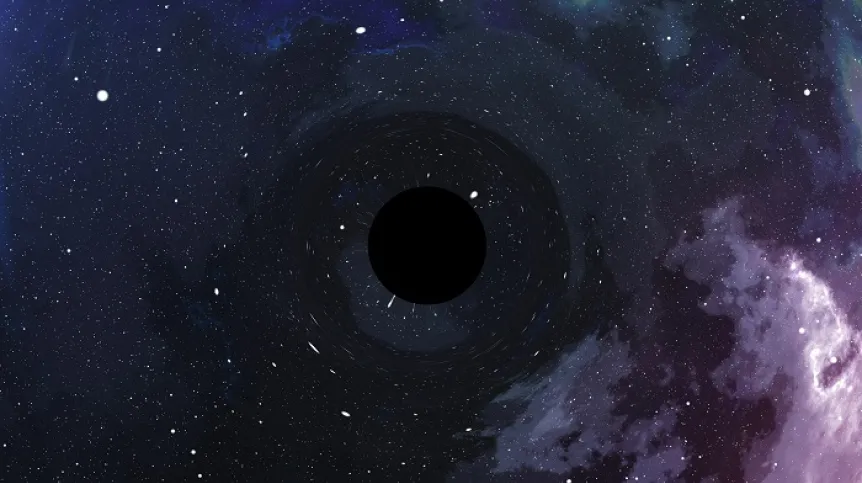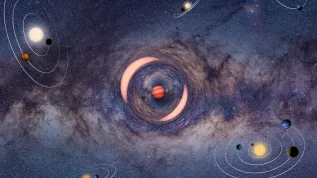
The candidates for dark matter particles include a certain neutral and difficult to detect particle - hadron, which is an S sexaquark that fits into the Standard Model. But how to observe this particle? Researchers from the Warsaw University of Technology have the idea for an experiment at CERN.
A paper by the team led by Dr. Georgy Kornakov from the Warsaw University of Technology was published in The European Physical Journal C.
Dark matter is, as might be expected, an invisible substance that accounts for a significant portion of the total mass in the Universe. It does not emit, absorb or reflect light, making it undetectable to electromagnetic radiation. Although it is elusive, its existence manifests itself in its gravitational influence on visible matter such as galaxies and galaxy clusters.
Discovering the nature of dark matter poses a huge challenge for particle physics. 'Particles with masses ranging from 10^-22 eV to 10^10 eV could be candidates for the role of dark matter particles. One such candidate, a hadron - which is an S sexaquark consisting of two up quarks, two down quarks and two strange quarks (uuddss) - has not yet been detected in observations due to its unique properties,’ says the university press release.
The supposed properties of the S sexaquark make it very elusive in experiments - it should be electrically neutral, long-lived, and almost never interact through forces other than gravity.
The proposed approach is to use trapped particles to overcome the challenges of distinguishing the production of a given particle type from other background processes. This measurement can be carried out within a year using the Antiproton Decelerator at CERN.
The uniqueness of the proposed approach is that it experimentally investigates a potential dark matter candidate that belongs to the Standard Model of particle physics. So if it turns out that dark matter is made of S sexaquark, there will be no need to invent a new theory explaining the interactions between particles, because the old, well-known theory will work.
More information (in Polish) is available on the website of the Faculty of Physics of the Warsaw University of Technology. (PAP)
PAP - Science in Poland
lt/ bar/ kap/
tr. RL













